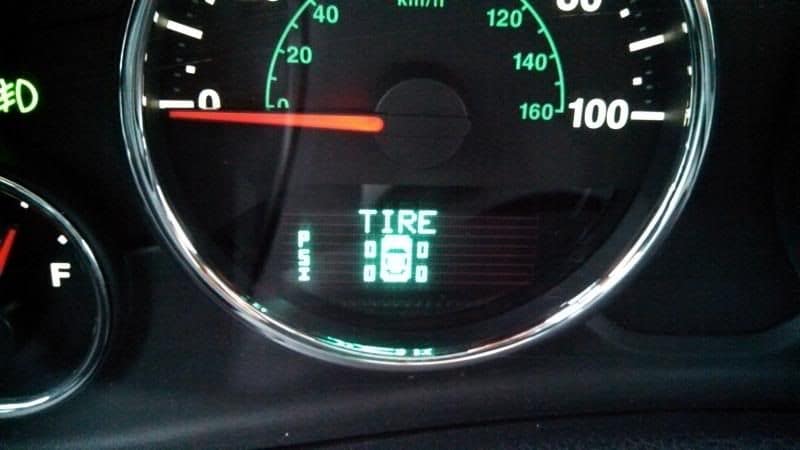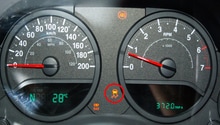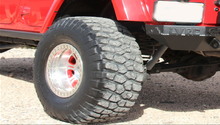Jeep Wrangler JK: Why is My TPMS Light On?
The TPMS light is supposed to tell you when your tire pressure is low, but that's not always the case. Read this diagnostic to find out more.
This article applies to the Jeep Wrangler JK (2007-present).
Your TPMS is there to indicate when your tire pressure is below the recommended level. In most cases this will be the culprit, but there are other circumstances that could trigger the light such as a routine tire rotation, or getting a new set of tires. If your TPMS light is on constantly, then it's directly related to tire pressure, but if the light is blinking, then something is wrong with the system and you'll need to take it in to a dealership. Keep reading for suggestions on getting the light to shut off.
Step 1 – Check the tire pressure
There is a sticker on your Jeep that will tell you at what PSI the tires should be kept. This is typically around 37 PSI. Check the tire pressure on all four tires with a tire pressure gauge to ensure it's at the recommended amount. If not, then increase the tire pressure with an air pump until it meets the recommended level.
Pro Tip
An important thing to consider is that the recommended tire pressure is for when the tires are cold. Don't add air to your tires after driving on them. To be extra sure, wait until morning or late evening before adding air to your tires.
Step 2 – Drive around for a bit
It might seem strange, but it's perfectly reasonable to ignore the light. If you've just fixed the tire pressure, or perhaps you've recently done a tire rotation or installed new tires, then it can sometimes trigger the light because the sensors in the tires need to adjust. It typically take 5-10 miles of driving for the sensors to fully adjust.
Step 3 – Check for leaks
Recheck your tire pressure after driving for a bit. If it's lower than when you last checked, then you may have a leak on your hand. The TPMS is useful for spotting leaks because it will usually tell you which tire has low pressure. Lift the Jeep with a jack and inspect the problem tire carefully. If you find any tears or holes in the rubber you can either patch it or replace the tire completely.

Step 4 – Make sure you have the correct sensors installed
If you have a 2013 or newer Jeep Wrangler JK, then there is a possibility that the wrong sensors are installed to your tires. An easy way to check is to write down your Jeep's VIN number and plug that info into the Mopar Parts Website. That should list the part number for the correct sensors for your Jeep. If you need to install new sensors, you'll also need to install new gaskets to prevent leaks after installing the sensors.

Step 5 – Try reprogramming your sensors
Flash programmers such as the ProCal module or the Superchips Flashcal are designed to work with the Wrangler JK. These programmers give you the option to adjust the PSI level that triggers your TPMS sensors or to even turn off the TPMS sensors entirely. However, this does mean that you'll lose the functionality of the TPMS.

Step 6 – Unplug the battery
It is possible that the TPMS is stuck in a triggered state. Unplugging the car battery and leaving it unplugged for 5 to 10 minutes will reset the TPMS along with everything else. Doing this means you'll lose your clock and radio settings as well.
Related Discussions
- Tire Pressure Monitor System - JK-Forum.com
- TPMS on after Tire Rotation - JK-Forum.com
- TPMS on, Aftermarket Wheels and Tires - JK-Forum.com






